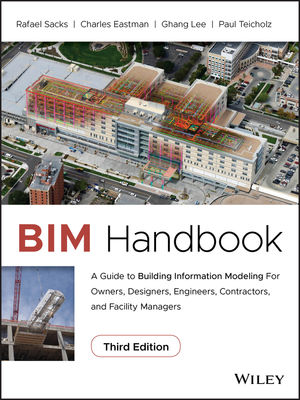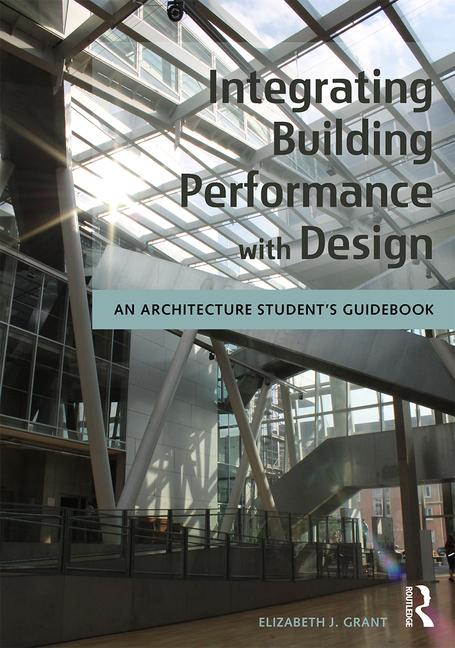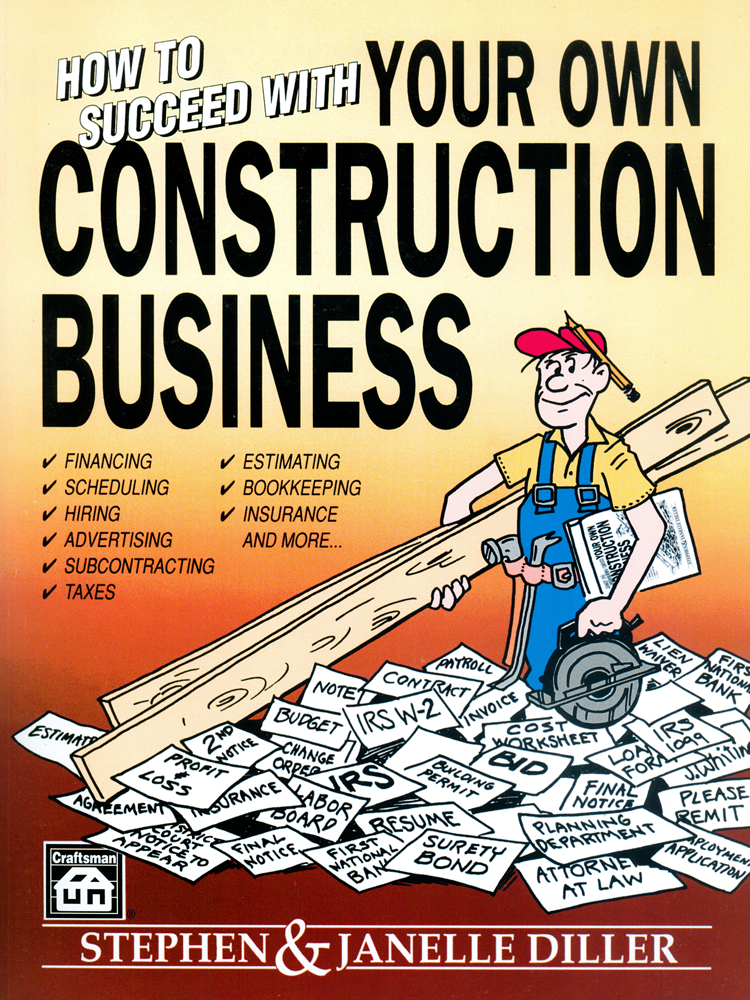Celebrating Women's History Month with Female Designers

For Women’s History Month this year, we’ve rounded up a handful of women in the architecture and design industry to pick their brains on what being a woman in this industry means to them, any issues they’ve faced—particularly during COVID-19—and what role models they strive to be like.
Anne Kniffen, IIDA, RID, LEED ID+C, Principal, Corporate Interiors, Dallas, Perkins&Will

The gender gap in design and construction has been slow to close. Undergraduate and graduate college programs have made the largest strides in equity enrollment. However, I believe that many design fields, especially in construction, will take several more generations to achieve equity. My interior architecture field is primarily female until you get to principal and firm owner roles, which still are majority male. Most architecture firms have fewer women, especially in leadership roles. Why? The same dynamics that affect other professions like law, accounting and consulting—a fair number of women still take alternative career paths for work/life balance. While we’ve made huge strides towards having more women as leaders, there’s still plenty of work to be done to break through the glass ceiling!
Women bring a unique perspective to the collaborative professions that make up the design and construction industry. Firms that have made progress in closing the gender gap frequently report that women have made large contributions to firm culture and the end product quality. As anyone in design and construction will tell you, a job in these fields can be demanding and all-consuming, but many of us are passionate about what we do and if we love what we do, “it’s in our blood” to strive to have great clients and projects. We continue innovating and learning as our work evolves. When Perkins&Will approached lauckgroup about joining the firm, the Board saw value in the culture of our female-led and female-centric firm. They recognized that we could contribute to their Texas offices’ culture and to the focus on great design. I’ve had some great role models throughout my career and truthfully a lot of them were men who were willing to mentor me! But there were also a few early women in my field who inspired me because they certainly had to cut their own paths and gain respect with talent and hard work.
When I see a female commercial real estate leader or construction firm leader who is successful, it makes me proud for all of us. It’s also really worthwhile to participate in groups that work within our profession to empower women. We will get to parity one successful woman at a time and will continue to improve our influence in each generation.
Suzette Subance, Managing Executive/ Studio Creative Director, TPG Architecture

Women have always been key players within the interior design and architecture industry, however, you rarely saw women standing in leadership roles. As a woman who has worked her way up the ladder to reach an executive-level position at TPG, I can enact change and make a difference. From this, I’ve made strides to lead my peers with trust, empathy and dedication—qualities I observed in my mother while growing up. I also see my position as an opportunity to inspire other women, teenagers and young girls who may not have considered a path in the A&D industry.
Collectively, we need to expose students to the industry early on and emphasize that yes, you can excel professionally while raising a family. Simple actions such as employing flexible schedules for working mothers will help them find the right balance to stay in the industry.
Kavitha Marudadu, Associate Principal, AIA, LEED AP, DMAC Architecture

There has never been a better time to be a woman architect. We are seeing more and more women take on leadership roles in the design industry, as we are better prepared to face the challenges that women in the profession have previously faced. One of the biggest challenges women face is the work–life balance, and many times that is a deterrent that keeps women from advancing in their careers. Women have been faced with making a choice between motherhood and having a career, which is a difficult choice to make.
On a more personal note, my passion for the profession has played a key role in overcoming the internal challenges that I have faced, and these are also what motivated me to give my best in both the realm. Having the support of the family and the firm definitely helped me work through this obstacle. Regarding advancement in my career, I always try to voice my opinions supported by factual and experienced-based knowledge. This is something that should be and, in my experience, is expected from all professionals regardless of their gender.
Mary Maydan, Founder and Principal, Maydan Architects
 If I could inspire change in any field I would like to help promote equality in architecture. A recent major survey of the field found that women account for half of the graduates from architecture programs in this country, yet only make up about 20 percent of licensed architects and 17 percent of partners or principals in architecture firms. There are many committees and organizations that work tirelessly to promote equality in architecture and I am convinced that it will be achieved. The question is not if and when we achieve this, but how and what we have to do to get there. I believe that seeing female role models succeed is empowering, and mentorship is crucial. Both will help tremendously, but I can’t overstate enough that there is no simple solution or quick fix. Change is slow and takes time.
If I could inspire change in any field I would like to help promote equality in architecture. A recent major survey of the field found that women account for half of the graduates from architecture programs in this country, yet only make up about 20 percent of licensed architects and 17 percent of partners or principals in architecture firms. There are many committees and organizations that work tirelessly to promote equality in architecture and I am convinced that it will be achieved. The question is not if and when we achieve this, but how and what we have to do to get there. I believe that seeing female role models succeed is empowering, and mentorship is crucial. Both will help tremendously, but I can’t overstate enough that there is no simple solution or quick fix. Change is slow and takes time.
Women need to mentor, support, and uplift other women. My advice to young female architects is to persist and believe in themselves, even in the face of workplace adversity. Women deserve to reach the top of their profession. When so many talented women quit architecture, we all lose. The problem is bigger than just representation in the workforce. The women that are not represented in the firms are not represented in our built communities. We are missing their perspective, voice and vision.
When I started out in architecture I was oblivious to the role gender played in the industry. I fell in love with modern architecture and living in Silicon Valley, where the architecture was very traditional, I was passionate about making others see the beauty in it. It never crossed my mind that my gender was even a factor. I think that in my case, because I was doing something different which gained recognition right away, it really wasn’t an issue. I believe that my mom, whom I admire, played a big role in developing this attitude. When I was a toddler, she noticed that I was very good at math. She kept asking me harder and harder questions and was delighted by my answers. Like any first-time mom, she bragged about me to everyone. For years, I was oblivious to the fact that there is a stigma surrounding women and math. I grew up seeing myself through my mom’s eyes. It fostered a feeling that anything is possible and I can dream big.
I have been very privileged to have my own firm, and as such, I have never had to face many of the obstacles that women working in big architecture firms do. However, as a woman in architecture, I still face daily the challenge of balancing my workload and being a hands-on mom to four kids. Often, I find myself juggling talking to a city planner on the phone, a contractor who has an urgent request for info, an employee who needs feedback, and one of my kids itching to tell me about what just happened in school. Even though my firm is female-dominated, we are still very much aware that the construction industry is male-dominated, and there will always be men who try to undermine us. However, when one takes themselves seriously and knows their job, it’s much harder to do that.
A couple of years ago, I was told that the general contractor of one of our projects said to a subcontractor: “You talk to Mary’s team about colors. Everything else is my expertise.” At first, I was hurt, but the next minute I told my team. “Really? That’s what he is going to say to people? He is building OUR vision. A stunning complicated steel and glass residence, which we designed to the tiniest detail and coordinated with all the engineers and consultants. No matter what he said, no one really thinks that we only handle colors.” We are always well prepared, and we understand both the construction and project management sides of the job. We don’t just draw lines on paper. I have to add, though, that this was a rare experience for us. We are fortunate to work with a phenomenal group of engineers and consultants, who never underestimate us because of our gender. We have great mutual respect for one another.
Erin Ruby, CID, IIDA President of the International Interior Design Association’s New York Chapter (IIDA NY) & Founder of Erin Ruby Design

While we’re seeing more women emerge and elevate within the A&D industry, we are a long way from ensuring that women are paid equally. There is still an alarming disparity between wages for men and women in the industry. Even more alarming is the number of working mothers who have left the workforce during the pandemic. One hundred percent of the 140,000 jobs lost in December were held by WOMEN. Yes, 100 percent. How is that even possible? And disproportionately women of color. This has set back any progress we have made by decades. We will be climbing an uphill battle for years to come trying to regain whatever momentum we had pre-COVID.
For me, it means ensuring more voices are heard, represented, and advanced. Another sad statistic: there are only 400 registered Black female architects in the U.S, right now. Again, how is that possible?! But I have hope for us in these interesting and challenging times. Women bring a perspective rooted in collaboration rather than ego; we consider the betterment of the collective versus just the bottom line. As the saying goes, a rising tide lifts all boats. I’ve been very fortunate throughout my career to receive guidance from strong female mentors and to see myself reflected in leadership. I recognize that as a privilege and hold myself accountable by paying it forward and helping to close the opportunity gap for other women.
I’ve always looked up to pioneers such as Florence Knoll, Zaha Hadid, Maya Lin, and Billie Tsien. Each of these women has forged a path while often being the only woman in the room. They made it possible for mine and future generations of women to see ourselves as architects and designers. They each possess a combination of acumen, grace, and fierce inevitability. They lead by example.
Katie Michael-Battaglia, Designer Director, Nemo Tile + Stone

The industry is very much a male dominated industry. When going to a trade show, there are definitely a lot more men than women, however I don’ t feel that I have been discriminated against because of being a woman. It may be attributable to the fact that a lot of these businesses have historically been family run and owned are passed down through the men. I know a few companies that are women owned, and they are doing pretty well. Some of these female-owned companies are definitely smaller and more niche, but I do see more females emerging in the industry.
As a woman, I'm empathetic and have good listening skills. I believe that these qualities give women, overall, a better sense of what customers are looking for. I am as strong as any man, yet as a woman I add this sense of empathy, as well as a greater degree of openness and intuition. Above that, I would say my most beneficial asset in the industry is having a background as a designer. This background allows me to have an idea of how products go together and what designers are looking for. I am able to see how a product will be used, and have the vision to see it fully designed. This gives me the insight to know if a product of ours will be successful.
Gala Magriñá, Founder and Principal of Gala Magriñá Design

“I think 2020 has put a huge spotlight on inequalities that exist everywhere, not just in the A & D industry, and that has been a wonderful thing. Becoming more aware is the first step! From there, creating permanent, consistent change is another story. Hopefully, a lot of companies have come to realize that by not implementing equal hiring and pay practices, the company is missing out on a diverse and very valuable array of voices. They’re also missing out on different points of view that are much more reflective of the diversity in our society than a single male point of view, and therefore points of view that are much more powerful and beneficial.
As a holistic interior design agency that believes and teaches that our spaces have a major impact on us, being a woman in design means having the responsibility and privilege of improving people’s lives on a daily basis, which is very rewarding. I think, generally speaking, that women are more emotional and intuitive than men, and bring this to the table with our design approach and interactions with clients. A few of my role models include Ruth Bader Ginsburg, Madonna, Michelle Obama, and Glennon Doyle, who are all total badasses that did it their way and I find that totally inspiring!”
AnaTracey Hawkins, Vice President of Strategic Growth, CNY Group

There are a multitude of approaches for closing the gender gap in my field of construction and closing that gap begins with each of us. Building supportive networks, creating buy in, finding mentors, giving back and becoming a mentor, retaining a coach. We have to have a voice, a seat at the table (not at the back). We have to step up and ask for promotions if we aren’t offered them and try for opportunities that we have potential for. And when our female colleagues don’t have the confidence to do it themselves we need to step up and help, if they struggle to have a voice we can stick our necks out a little, behind the scenes if necessary.
When I first stepped into this industry I began to build a network of like-minded women, women did not try to compete with one another but wanted to see others grow and achieve success. It was shocking to me how often it was women who were standing in the way of other women. That has to stop, we have to be inclusive. It takes a team, we need to be a team. Some of my mentors were/are male, men that wanted to see more women playing key roles. This is a classic example of why all kinds of diversity is so important, their advice often helped me understand ideas from a different perspective and tackle my day-to-day operations in different light. Not being afraid to seek help when needed helped me excel and be much more efficient at what I do today. Ask for it.
Opportunity. We have a chance to make a difference. Diversity and Inclusion is the future. As a female in a predominantly male industry, I continuously aspire to pave the way, support other women and be a trailblazer to open up the path for other women.
I have three female role models—the first one being Indra Nooyi. I identify with her ability to make the complicated simple and I admire her strategic vision. Second, Michelle Peluso for the simple fact that I agree with her. If you treat your employees as unique individuals, they’ll be loyal to you and they’ll perform—ultimately your business will perform as well. Lastly, my mother Dianne McDonald. Her practical “roll up your sleeves” and problem-solving approach is something I carry with me every single day.
Deanne Erpelding, Senior Vice President and Regional Leader, Central and West at NELSON Worldwide

The industry has made great strides, however there is still a lot of work to do around closing the gender gap. With the Covid-19 crisis, women in particular have been negatively impacted. Many have considered downshifting their careers or leaving the workforce entirely.
Companies more than ever should be looking at organizational and cultural changes. We are in a critical time right now. Having a diverse and inclusive workforce is good for business. Women designers outnumber men in every kind of employment type, yet a very small percentage of them hold leadership positions. According to the 2019 AIGA Design Census 61 percent of designers working at the time of the survey were women, yet only 11 percent of women held design firm leadership roles.
That said, I do have a positive outlook on closing the gender gap as we look to the future. The pandemic crisis has propelled many things that would have taken years to change. As companies are looking to pivot and shift, there is a heightened awareness on change and looking at things differently. Now is the time for companies to reinvent the way they work so that it is flexible and sustainable for everyone. I’m honored to work for a company that is over 55 percent female, and an even higher percentage in leadership roles. When women have access to opportunities, they are likely to take them. While there are many women who have paved the way or are currently paving the way, it’s still a statistical fact that women designers don’t have enough women leaders, mentors and role models within their immediate surroundings.
Use design for sharing, teaching and breaking down barriers. The world is complex. Design gives us a way to sort through it along with the ability to communicate across different cultures, communities and languages. Be your best advocate. Have courage to take risks. Be resilient. Lead with empathy. Be vulnerable. Actively listen. Deliver excellence (always).
One of my female role models is Cheryl S. Durst, Hon. FIIDA, Executive Vice President and CEO of International Interior Design Association (IIDA). I've had the great fortune to be belong to IIDA throughout my career and have firsthand experienced her leadership while holding several board positions for the IIDA Northland Chapter. Cheryl is an exceptional communicator, innovator and visionary leader. Her advice I once heard was "Stay curious. Stay optimistic. Ask great questions. Listen more than you speak. Design with joy. Believe in humanity. Lead with empathy. Learn something new, every day. Trust gut instinct. Try not to take everything personally—no one thinks about you as much as you. Read, a lot. Embrace, revel in, and accept change."
Monica Jamlang, Studio Director, MBH Architects

While we are “closing” the gap, it’s important the movement towards increasing equity in the A&D industry keeps its momentum, as we have much more work to do. While the gap is now more narrow, the challenges are harder to tackle. We have moved beyond hiring more women and now need to address how we create more opportunities and change internal implicit bias. Implicit bias is a difficult piece of the puzzle because it is hard to change a behavior if you don’t know you’re doing something wrong. Leadership teams need to closely consider why they think a man is a better fit for a role than a woman, and why you cannot help her rise to her position. While it’s frustrating we still have our biggest fights for equality ahead of us, we need to remember how far we’ve come, and increase our appetite to really close the gap. A boss of mine once said that we will get to our destination faster if we’re all rowing the boat in the same direction. Men should grab an oar and row in the same direction.
Having equity across genders should be an important goal for companies in the A&D industry, and that starts with companies’ leadership making this a priority and leading by example. I’m proud that I lead a diverse team of strong women that work with global retail and technology clients.
If you had asked me what being a woman in this industry means to me when I was younger, I would’ve been confused. I was surrounded by strong women and believed that I could be in any industry that I wanted. Now that I’ve seen the reality of inequity in the A&D industry, it means so much more to me to be an architect. I am just one of the many powerful women today who, just by being in the field, is reimagining what is considered normal. We support each other simply by understanding one other on a human level—listening to our goals and respecting the strengths that we each bring to the team. There is so much you can gain by just listening to the other person talk, and I am honored to be an advocate and mentor for my team.
Living in the Bay Area, with a more inclusive work and societal culture, I have seen that I am not the only woman nor person of color in the workplace. It allows me the freedom to feel comfortable, speak out more, and just get the job done. Because I’ve seen strong women of color represented before me, I don’t have to spend my energy proving I belong. I would not be in my current position if I was in an area where my value was constantly being questioned. I am an example for both my younger self and for future female architects, who can dream of futures filled with infinite possibilities.
Grace W. Cheng, AIA, LEED AP BD+C, Principal in CallisonRTKL, Los Angeles

I have seen a gender gap in the construction field for as long as I can remember. Even while I was at MIT and Harvard, there were only one or two women in each studio. Because there are so few women in the industry, it is rare to see a female lead designer like myself. I’ll never forget when a potential client liked my portfolio but requested if my boss could put forward a male, white, lead designer in my place. Thankfully, that request resulted in my boss walking away from the project. I have noticed that women are incredibly detail-oriented, talented at multitasking, and have a great sense of aesthetics. Additionally, many women can think and visualize in three dimensions, which is a quality not everyone has. It is time for this gender gap to close to allow more women architects to showcase their full potential.
Being a woman in the industry means I need to work extra hard. In this field, I’ve felt pressure to make many life decisions based on my job status. For example, I put off having children until nine years after my marriage because I was so busy with work. There have been times in my life where I’ve had to prioritize my work over my family. Not to mention, international travel about 10-12 times a year and working late hours to communicate with overseas clients can often prevent me from spending time with my family. When I attend conferences, I find myself one of the very few women designers present. I wish that more women that aspired to be designers had the opportunity to lead rather than take production roles.
Catherine Gow AIA, NCARB, Principal, Health Facilities Planning at FCA

In my first year of architecture school, there were 100 people and only eight of them were women. This year, the university’s architectural school roster is 50 percent women and the hope for future female leaders in architecture is higher than ever. While this is promising news, the pandemic has increased the gender gap in the field as some women have left to care for their children and families.
The design and construction industry has always been one where being a woman means always proving yourself and what you know. While it has improved over the years since I started as an intern architect, there are still job sites I have been on where my leadership or knowledge is questioned when my male colleagues might not be.
Early on in my career there were a few role models that one could look up to, such as Denise Scott Brown, Zaha Hadid, and Jeanne Gang. While I idolized these women, they were successful at a level that was star architect. There were still very few women that were partners or principals of a firm. I am thankful to say that those numbers have increased but still need more improvement. I continue to push for equality and parity of the workplace for women.
Looking for a reprint of this article?
From high-res PDFs to custom plaques, order your copy today!









